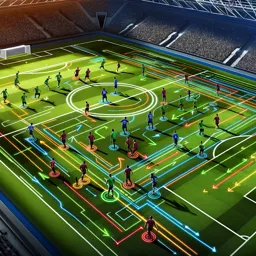Basketball is a dynamic and exciting sport played worldwide. Whether you’re a fan or a new player, understanding the basic rules is key to enjoying and playing the game confidently. This guide covers the essential rules and gameplay for beginners.
1. The Objective of the Game
The main goal is to score points by shooting the ball through the opponent’s hoop, which is 10 feet high. Teams try to score while stopping the other team from scoring.
2. Team Structure and Positions
Each team has five players on the court, usually filling one of five positions: point guard, shooting guard, small forward, power forward, and center. Each position has unique responsibilities.
3. Scoring
Points can be earned in three ways:
- Field Goals: Shots made inside the three-point line, worth 2 points.
- Three-Point Shots: Shots made beyond the three-point line, worth 3 points.
- Free Throws: Shots awarded after certain fouls, worth 1 point each.
4. Game Duration
Games are divided into either two halves (common in college basketball) or four quarters (like in the NBA). Each part has a set time, and the game resumes where it left off after breaks.
5. Basic Rules of Play
- Dribbling: Players must bounce the ball while moving. Running without dribbling is called traveling and is a violation.
- Passing: Players move the ball to teammates through chest passes, bounce passes, and more.
- Defense: Teams block shots, steal the ball, and force errors to prevent scoring.
- Fouls: Illegal physical contact results in fouls, leading to penalties like free throws or player disqualification after repeated fouls.
6. Common Violations
- Traveling: Moving without dribbling properly.
- Double Dribble: Stopping then restarting dribbling, or dribbling with both hands.
- Goaltending: Touching the ball on its way down toward the basket.
- Out of Bounds: Stepping or dribbling outside the court’s lines.
7. Getting Started
Begin by learning these basic rules and practicing skills like dribbling, passing, and shooting. Playing at a local court with friends is a great way to improve and enjoy the game.
Remember, the best way to learn basketball is by playing. Grab a ball, find a court, and join the fast-paced fun today!

































